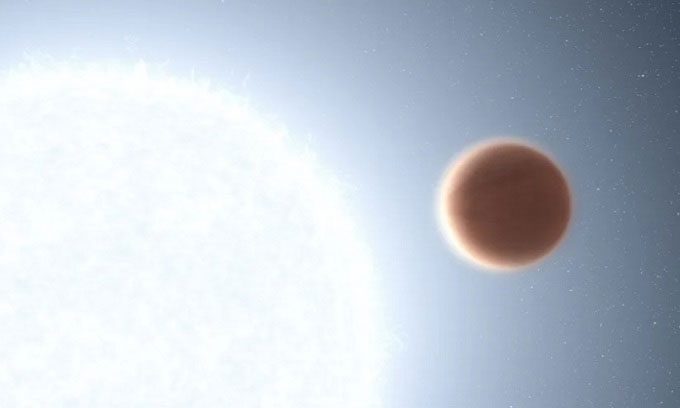The element samarium found in the atmosphere of the planet MASCARA-4b has broken the record for the heaviest element discovered on an exoplanet outside our solar system.

Simulation of a hot Jupiter planet. (Image: NASA).
Researchers at the National Astronomical Observatory of China have discovered the heaviest element in the atmosphere of a planet. MASCARA-4, a hot Jupiter, has a mass 3.1 times that of Jupiter and an atmosphere with temperatures in the thousands of degrees Celsius. Its extreme hot atmosphere contains traces of the element samarium, with the atomic number 62, IFL Science reported on April 20.
“Each star and planet contains elements from the moment of their formation. Due to their high atomic numbers, they are usually found in low-altitude, high-pressure regions, making them difficult to detect,” said Dr. Wei Wang, a co-author of the study.
While samarium is the heaviest element in the atmosphere, this exoplanet also contains rubidium (atomic number 37). Previously, the research team confirmed the presence of magnesium, calcium, chromium, iron, barium, and titanium. The presence of titanium is particularly intriguing as experts have previously found titanium oxide in a layer resembling the ozone layer in the atmospheres of hot Jupiter planets. According to researchers, the existence of minimal oxygen might facilitate the formation of the atmosphere and its interaction with samarium. Samarium in Earth’s atmosphere reacts with oxygen and water vapor.
Wang and colleagues used the Very Large Telescope in Chile to measure starlight as the planet passed in front of it. The atmosphere filters the light, allowing the research team to use a spectrometer to identify the types of elements present in this planet’s atmosphere. The star is classified as an A-type star, hot and larger than the Sun. MASCARA-4 is located very close to its host star (less than 5% of the distance between Earth and the Sun).
The research team hopes that future observations will uncover more elements and molecules in the planet’s atmosphere. Comparing the composition of the planet with that of its host star will enhance understanding of their formation and evolution processes. The study by Wang and colleagues has been peer-reviewed for publication in the Astronomical Journal and is available in the ArXiv database.


















































